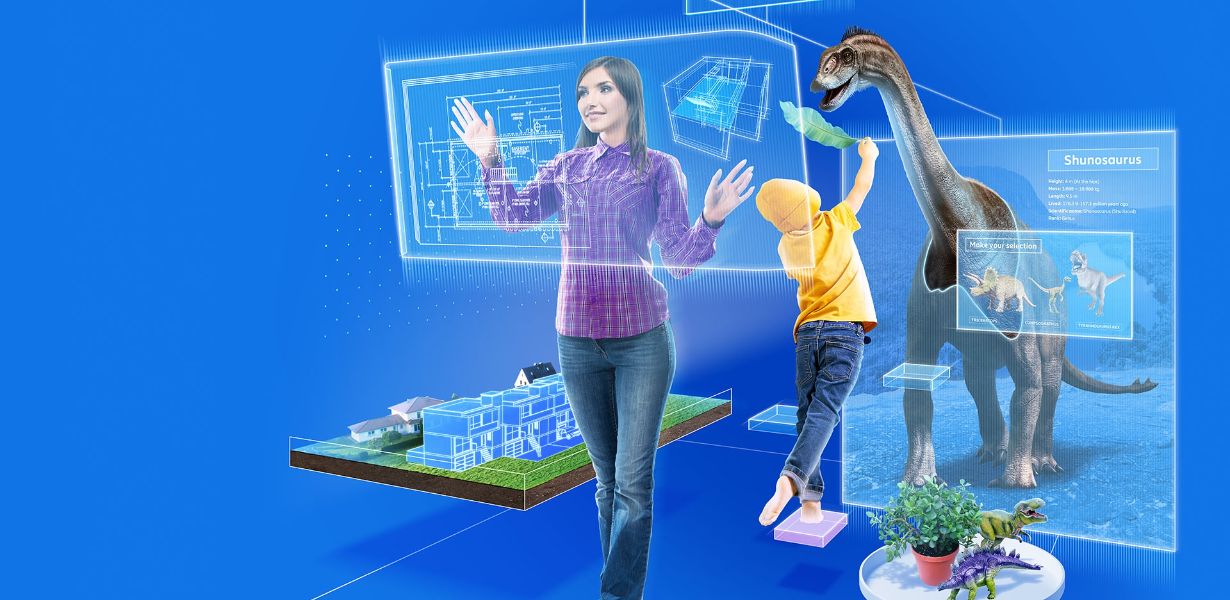
Augmented Reality Beyond Gaming: Exploring Practical Applications for Everyday Life
- Post
- August 8, 2023
- Ad Serving Tech, Awareness, Real-time Bidding
- 0 Comments
In a world where technology is rapidly advancing, augmented reality (AR) has emerged as a groundbreaking innovation that extends far beyond the realm of gaming. While AR’s captivating impact on the gaming industry is undeniable, its potential applications in everyday life are equally awe-inspiring. This article delves into the myriad ways in which augmented reality is transforming various aspects of our daily experiences, from education to healthcare, and from retail to real estate. Let’s embark on a journey to uncover the practical and innovative applications that AR brings to the forefront of our lives.
Table of Contents
The Evolution of Augmented Reality
Augmented reality has undergone a remarkable evolution, transitioning from a niche concept to a mainstream technology. Combining virtual elements with the physical world, AR provides an enriched sensory experience that blurs the line between imagination and reality. From its inception to its current status, AR has emerged as a powerful tool with a myriad of potential applications.
Enhancing Education and Learning
Augmented reality is revolutionizing education by making learning immersive, interactive, and engaging. Imagine a history class where students can witness historical events unfolding before their eyes or a biology lesson where the inner workings of the human body are brought to life. AR apps and platforms are turning textbooks into dynamic experiences, fostering deeper understanding and knowledge retention.
Revolutionizing Healthcare Practices
In the realm of healthcare, AR is poised to transform diagnostics, surgery, and patient care. Surgeons can now overlay critical information on their field of view during operations, aiding precision and reducing risks. Medical students can practice procedures on virtual patients, gaining valuable experience without endangering real lives. AR is set to reshape medical training and patient outcomes.
Retail: Bridging the Gap Between Online and Offline
Augmented reality is reshaping the retail landscape by enhancing the shopping experience both in physical stores and online. Shoppers can use AR to visualize furniture in their homes before making a purchase or try on virtual clothes without stepping foot in a fitting room. This technology is breaking down barriers and redefining the way consumers engage with products.
Architectural Visualization and Real Estate
Gone are the days of imagining how a property might look based on blueprints. Augmented reality is empowering real estate professionals and prospective buyers to virtually walk through properties, experiencing their potential in a lifelike manner. This not only accelerates decision-making but also opens new dimensions in property showcasing.
Industrial Training and Maintenance
In industries like manufacturing and maintenance, AR is proving invaluable. Technicians can receive real-time instructions and information overlaid on equipment, streamlining repair and maintenance processes. Complex machinery can be better understood through augmented visualizations, reducing errors and downtime.
Cultural Heritage Preservation
Augmented reality is breathing new life into cultural heritage sites and museums. Visitors can explore historical landmarks with virtual guides, witnessing bygone eras and events. This fusion of history and technology makes learning about cultures and histories more engaging and interactive.
Collaboration and Communication
AR is fostering innovative approaches to collaboration and communication. Virtual meetings can become more immersive with participants appearing as holograms in a shared space, regardless of their physical location. This has the potential to revolutionize remote work and bridge geographical gaps.
Challenges and Future Prospects
While the potential of augmented reality is immense, challenges such as data privacy, technical limitations, and user acceptance need to be addressed. The future, however, holds exciting possibilities, with AR likely to become an integral part of various industries and aspects of our lives.
Final Words
In a world where innovation is driving progress, augmented reality stands as a beacon of transformative potential. Beyond its gaming roots, AR has blossomed into a technology that enhances education, healthcare, retail, real estate, and more. It’s a bridge between the virtual and the real, reshaping the way we perceive and interact with our surroundings. As the journey of augmented reality continues, we can only anticipate the astounding ways it will enrich our lives.
Commonly Asked Questions
How does augmented reality work?
Augmented reality blends digital elements with the physical world through devices like smartphones or AR glasses. These devices overlay virtual information onto the user’s real-time view, creating an interactive and immersive experience.
What industries are adopting augmented reality?
Augmented reality is finding applications in various industries, including education, healthcare, retail, real estate, manufacturing, and entertainment.
Are there any privacy concerns with AR?
Yes, privacy concerns arise due to the collection of user data and the potential for unauthorized access to personal information. Developers and regulators are working to address these issues and ensure user data protection.
How is AR different from virtual reality (VR)?
Augmented reality adds digital elements to the real world, enhancing the user’s perception of reality. Virtual reality, on the other hand, creates a completely immersive digital environment that shuts out the physical world.
What is the future of augmented reality?
The future of augmented reality is promising, with advancements in hardware and software opening doors for new applications. AR is expected to become more integrated into daily life, transforming industries and how we interact with technology.




